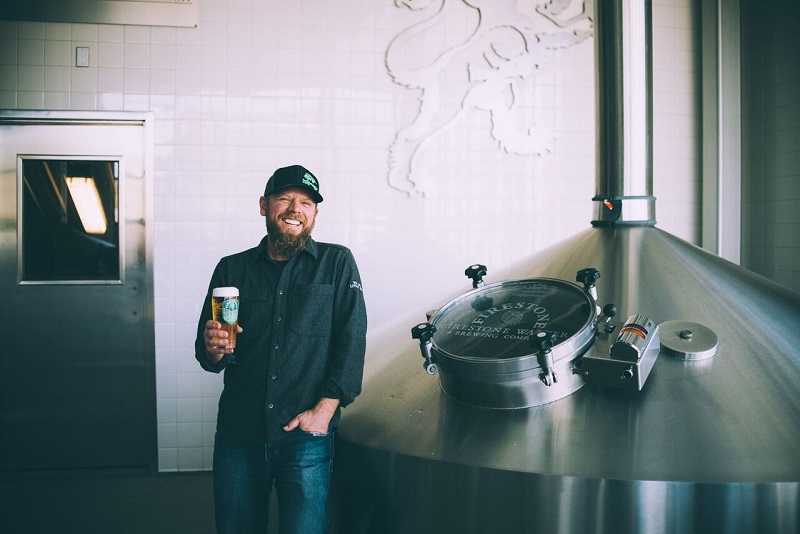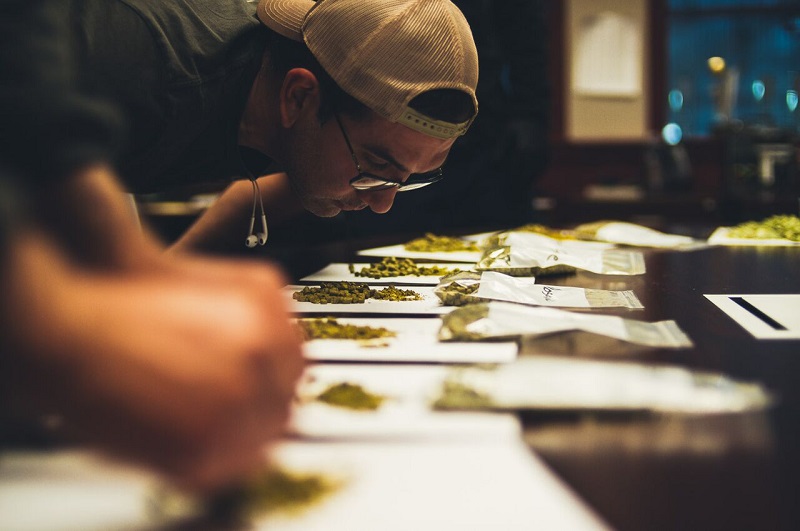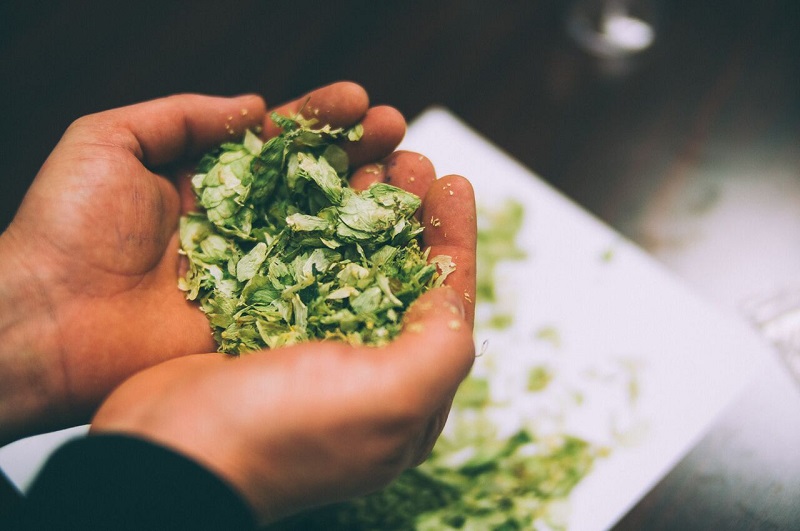Sponsored: The Mystery of Firestone Walker’s Luponic Distortion Series

Firestone Walker Head Brewer Matt Brynildson (Photo courtesy Firestone Walker Brewing Co.)
Presented by Firestone Walker Brewing Company
Take an India pale ale. Dry hop it with a variety of hops, then release it to the beer-loving public. Sounds like what lots of breweries are doing these days, right? So how do you mix it up?
If you’re Firestone Walker Brewing Company, you decide to completely change the dry hops and re-release the beer every 90 days. Then you come up with a clever name–Luponic Distortion–for your rotating series of hopped-up brews.
And the brew team doesn’t pull from the usual run of aromatic hops. Each rotation—or “revolution” as the brewery calls it—features a blend of as many as nine different hop varieties. Each beer leads with a different experimental hop from growing regions around the globe.
A new hop from the Pacific Northwest was the centerpiece of Luponic Distortion 001, while the second showcased an experimental hop from the Pacific Northwest with an assist from Southern hemisphere hops (New Zealand). The third will showcase new experimental German varieties and will be released in September.
“We came up with the idea that changing a beer every 90 days would be a perfect vehicle for experimentation with hops,” says Firestone Walker Head Brewer Matt Brynildson. “In order to make it work, I have to go out and engage with growers and commit to a few acres of hops.”
A self-proclaimed hop geek, Brynildson started his career as a hop chemist. He’s been with Firestone Walker since 2001 and has traveled widely to walk the earth’s hops fields and talk to growers. But in the past, he couldn’t commit to purchasing small acreage of new hop cultivars. With the Luponic Distortion series and the brewery’s new pilot system, he can.
“This program enables us to commit to a new hop,” he says. “In the beginning, we decided on a half dozen experimental varieties harvested in 2015 that would be available in ‘16. We spent time getting to know hops as a raw material before we worked with them in the brewery.”

Ali Razi, production manager at Firestone Walker Brewing Co., sniffs hops. (Photo courtesy Firestone Walker Brewing Co.)
Brynildson and his team sit down with a variety of fresh potential hop cultivars, most from a specific region to plan each brew. After lots of playing with the cones–rubbing, smelling, feeling, and tasting–they pick one to build the beer around, plus a cast of supporting hops.
Which specific varieties are featured in the Luponic Distortion revolutions? Firestone Walker isn’t saying.
“We’re not disclosing the hops we’re using. There’s no real reason other than we think it’s fun to cloak this beer in a bit of mystery,” Brynildson says. “We’ve probably shared too much about our recipes in the past. With Luponic, we want to adapt as we go and keep the rules loose.”
For the most recent Luponic incarnation, the team chose nine hops to use, while focusing on an experimental that has a peachy, mango kind of aroma, per Brynildson. To a lot of brewers, finding balance with that many different hops seems a bit insane, he adds.
“But this is definitely the same beer, just with subtle tweaks of dry hopping,” he says. “The IBUs are the same. The hot side is the same. The amounts of dry hopping are the same.”
Brynildson does let slip one variety he’s excited about using in the soon-to-be released Luponic Distortion: Comet.
“Comet is one of the hops that brewers used back in the day—in the 70s—and it has resurfaced recently,” he says. “It’s an old public variety that everyone has access to and that we got to check out in the field.”
While Comet is an old cultivar, many of the cultivars being used are new—so new that they still go by their experimental plot numbers. It can take between 9-11 years to develop and produce a new hop. Many candidates get left behind.
“New cultivars are initially breeder and grower led to establish agronomic viability,” Brynildson says. “But then they get brewers involved to rub and smell the new hops and say, ‘This is great or this is ho-hum.’ Hopefully we help move the process forward.”

(Photo courtesy Firestone Walker Brewing Co.)
The goals of Luponic Distortion include not only educating and challenging Firestone Walker’s brewers, but doing the same for beer drinkers. As IPAs generally are considered 90-day beers, it’s going to be difficult to compare the beers, but that’s part of the fun as well, per Brynildson. He wants folks to drink the beers fresh and then test their noses and palate memories to discern the differences among them.
Firestone Walker produces around 5,000 to 6,000 barrels of each beer. The revolutions have a number on the label to indicate which brew it is (001, 002, and soon, 003). Thus, the brewery has given themselves three decimal places of hoppy combinations. They aren’t saying the series will go to 999, but they aren’t saying it won’t.
“Craft beer has had all this amazing growth recently. It’s a shot of adrenaline for everyone involved,” Brynildson says. “It’s never been a better time to be a brewer. It’s never been a better time to be a beer drinker, and it’s never a better time to be a hop grower. The growth of craft beer has in turn fueled this major hop breeding effort.”

And you don’t at least give us even a clue as to where Firestone Walker exists?
http://lmgtfy.com/?q=Firestone+Walker+Brewery
One of the best in the business! Congrats on the success Matt!
I think it’s great that there are brewers that extend the imagination of a revolving brew that everyone is into and anticipates the next variety of the sweet nectar of the hops that will be used next. Great job! Im hooked. As a brewer, with hopes to start my endeavors soon, it’s brewers like you that set a solid standard that this new exploding market seems to be explosive.
Thanks for your creativity and excellence.
Shane Headrick
559-799-9144
Ps…. I’m growing hops, and barley this season. Sky’s the limit this year and may all my friends and my enjoy the fruits of my labor and creations. Cheers my fellow beer patrons!